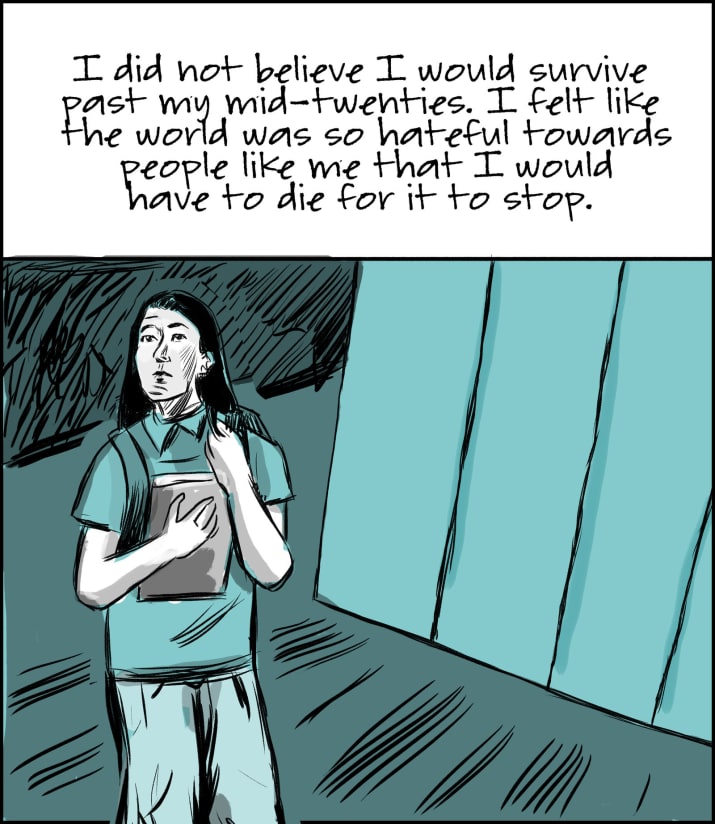The Sunday Post for July 30, 2017
Each week, the Sunday Post highlights a few articles good for slow consumption over a cup of coffee (or tea, if that's your pleasure). Settle in for a while; we saved you a seat. You can also look through the archives.
I choose my pearls: on feminism, fashion, and Disneyland
A microinteraction with a stranger waiting to ride the Big Thunder Mountain Railroad sparks a wide-ranging essay by Tabitha Blankenbiller on women’s clothing, choice, and self-respect. And nope, it wasn’t a man who shamed her for wearing a dress to the Happiest Place on Earth.
A day at Disneyland is a rare day of freedom. If you have a ticket, you have the world. You can stay as late as your feet will carry you, ride as many Mountains and Mansions and Cruises and Carousels as you wish. You can have Dole Whips for lunch and Matterhorn Macaroons for dinner. You can let yourself believe that the college student in a wig you’ve waited forty minutes in line to be photographed with is actually Cinderella because she is Meryl Streep-level committed to the role. A hundred fireworks end the day not because it’s special, but because it exists.
On top of that, you can wear whatever you want.
I've Found Her
You’ll begin this piece by Martha Baille knowing what it’s about; very shortly in, you’ll realize you have no idea at all. But you’ll keep reading — lyrical in substance, blunt in language, and personal without a hint of gossip, it’s addictive. Yes, this is slightly mysterious; now is a moment for trust. Read on!
My future self, month in month out, has perched on the tall filing cabinet in the corner of my study these past eleven years. Every so often I’ve cast a glance her way, applauded V for his fine sense of humour, and wondered about the life and identity of the woman captured in the likeness offered to me as a teasing foretelling of who I may one day become. Most days I’ve given her no thought, yet she has hovered. Then H’s recent shot of her arrived.
What It Feels Like Being A Trans Person Serving In The Armed Forces
Graphic novelist Jess Ruliffson has spent the past five years interviewing veterans of the Iraq and Afghanistan Wars for an upcoming book about their experiences. This well-timed excerpt is a reminder, for those who need it, of what’s at stake when our crazy president salves his political humiliations by reverting to Bully in Chief.

If Hillary Clinton Had Won
Nate Silver wins this week’s sci-fi smartass award for playing tour guide through an alternate universe in which we were all right about Election Day 2016.
Things are really different on Earth 2! Merrick Garland is on the Supreme Court instead of Neil Gorsuch. Clinton didn’t enact a “travel ban.” The United States didn’t withdraw from the Paris climate accord. Kellyanne Conway has a CNN show.
OK, maybe things aren’t that different. This is Earth 2, not Earth 5, where Clinton won in a landslide, or Earth 4044, where Jim Gilmore is president (it’s a cold and dark place, and I wouldn’t advise visiting). Earth 2 preserves about as many of Earth 1’s features as possible, other than the things that just can’t be the same because you have Trump as your president and we have Clinton as ours.
A New Approach to Designing Smart Cities
Would you rather live and work in a Twinkie, or in your grandmother’s fruitcake? (Perhaps neither.) David Galbraith proposes a new concept, “recipe-based” city design, that could change how architecture and city planning interact with human experience. A fabulous set of images and examples, from David Cronenberg to Mies van der Rohe, brings this somewhat wonky piece to life.
This functional need for highly ordered city plans is changing, however, as information technology allows communication that is independent of the physical environment, and intelligent automation allows point to point physical movement in self directed pods rather than mass transit on fixed arteries. Specifically, ubiquitous, GPS enabled smartphones remove entirely the concept of "getting lost," and route programmed self driving cars and mesh network power grids enable organic city layouts to replace grids. Cities of the industrial age looked mechanical, cities of the information age can look like fractal networks — like nature.